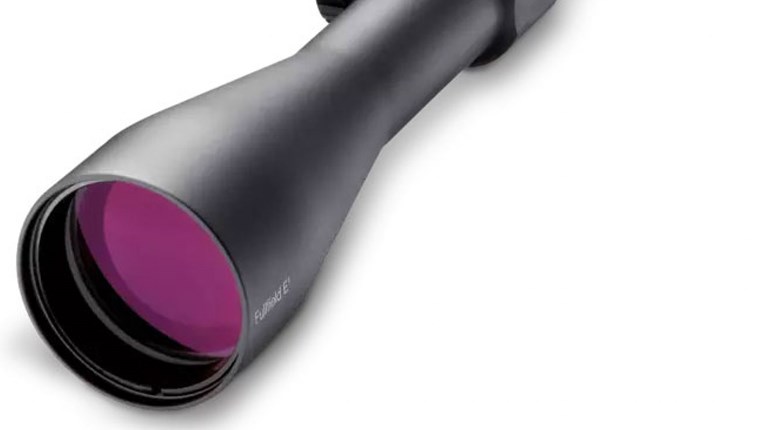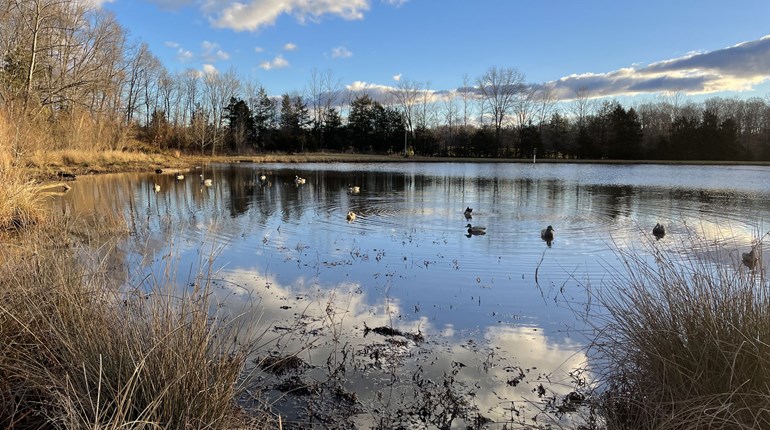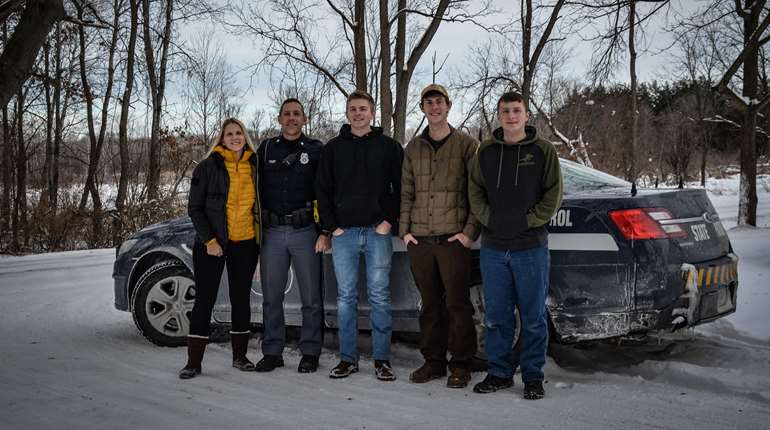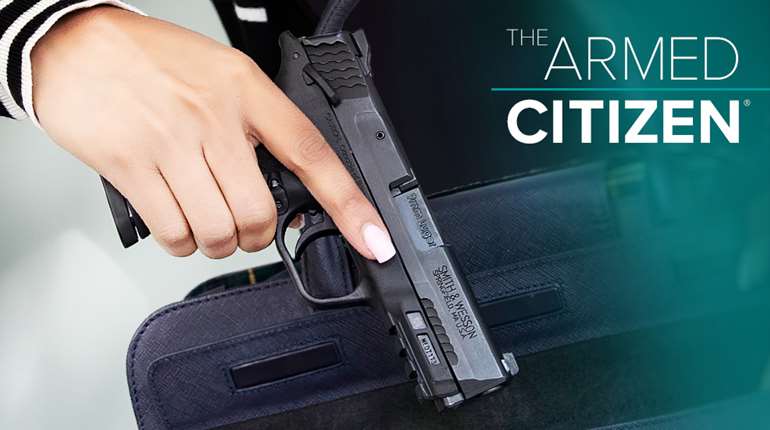
So you’ve shot a deer or other big-game animal and you’ve either followed the blood trail until it ran out, or you haven’t found much of a trail to begin with. I know how frustrating this can be, especially if you know you made a pretty good shot, but don’t give up hope. Here’s what to do when the blood runs out.
Don’t Give Up
Some blood trails are just really sparse, even when the deer is well-hit. Seemingly running out of blood does not automatically mean you can’t recover this animal!
Regroup
Pause and collect your thoughts. Relive the shot and picture where the animal was standing when you shot, which direction in ran, and where it disappeared from your sight. Climb back into your treestand to get a better view of those spots if you have to.
Re-evaluate
Using this article as a guide, re-evaluate the blood you found at or near the site of the initial hit. If the color of the blood indicates a marginal hit, maybe you shouldn’t be tracking at all yet.
Mark Last Blood and Fan Out
Mark the blood trail as you go with small bits of flagging tape or, my preference, toilet paper or tissue. This will help make the direction of travel more obvious, and you definitely do not want to wander away looking for the next drop and lose the previous drop. Always mark the last place you saw blood. Do not step away from it until you have thoroughly examined, with a flashlight if needed, the spot you’re about to step into. You don’t want to accidentally trample on the blood trail.
Wounded animals don’t always run in straight lines—they might make turns and circle back on their own trail. Don’t assume that the next drop of blood must be in a line with the rest of the trail. Fan out in expanding half-circles to look for blood if you haven’t found it straight ahead of you. Look high (several feet off the ground) as well as low.
Call for Backup
By the time you have to start fanning out, you might need a buddy or two to help you search for the next blood spot. If possible, call some friends to come give you a hand. Too many people on a traditional search for blood can muck up the trail if it’s still followable, but if you have plenty of help, you can skip this and go straight to a grid search.
Consider the Weather and Conditions
If it’s raining or snowing and the blood trail is washing away, don’t panic, and don’t let this pressure you to track a deer sooner than you should. Rain is not a reason to hurry up and push a wounded deer out of its bed before it’s had time to expire—and neither is darkness. You don’t want to leave a deer overnight if you don’t have to, even in the cold, due to predation concerns. Keep searching in the darkness unless you have reason to believe the shot was marginal and the deer needs time to die.
Start a Grid Search
A grid search is most effective with lots of help. If you can, gather plenty of friends and spread out in a straight line a few feet back from the place where you marked last blood. You should be relatively close to each other so that each person can thoroughly search the area in front of them—in tight cover, this might be only a couple of feet apart. In a wide-open field, it might be 10 yards apart.
Mark where you’re starting on both ends of the line, and then everyone searches their area slowly and methodically, moving forward as a group so the line remains intact. If you’ve gone a long distance without luck, go back to where you started and work in the opposite direction in case the animal circled back. This method can be very effective, and the more people, the better.
Stop Looking for Blood and Start Looking for the Animal
To this point, you’ve been looking for blood, lifting your eyes as you go to see if you can spot the downed animal ahead of you. If you’ve been looking for next blood for an hour or more and having no luck, it might be time to give up on the blood trail and accept that you’re now looking for the animal itself. This is harder to do in the absence of blood, so don’t give up on the blood trail until you have to.
The above-mentioned grid search is great for finding the carcass if you have help. If you don’t, start marking your steps and slowly walk in a methodical back-and-forth pattern that lets you thoroughly cover every step of ground in a wide swath.
Depending on how long it’s been, predators and scavengers might find the animal before you do. Listen for coyotes yapping, particularly at night, and keep an eye out for circling buzzards and even crows, which just might point you to the carcass.
Consider Tools
Thermal imaging can be very helpful in finding wounded game when the blood trail has run out. Because thermal “reads heat,” this tactic is effective as long as the animal’s body temperature is different from the air temperature—it won’t work if the animal has been dead in the woods all night long and has reached room temperature, and it might not be as effective on a freshly-killed animal in really warm temperatures. But other than that, thermal imaging can make animals much easier to spot from afar, because it works day and night and it can “see” through brush, fog, rain and more.
Where legal, blood-trailing dogs can be very effective, too. This isn’t allowed in every state, but if it is in yours and you have access to someone with trained dogs, don’t hesitate to take advantage of their skills.
Know When to Give Up
I know how bad this sucks, but sometimes you just have to accept defeat. If you’ve searched for three or four hours in the dark and a grid search hasn’t yielded results, it might be time to call it, at least for the night. Back out and try again tomorrow in the daylight. Understand that you run the risk of coyotes or other predators ruining the meat. If it’s very warm out, you might even lose all the meat to spoilage, which is why this is your last resort. You might be left with antlers only at this point.
Another grid search in the daylight might prove more effective, but if you feel like you’ve covered a sufficiently large area and there’s just no way to find the deer, you have to accept that it’s not going to happen. Best case scenario is the animal was only superficially wounded and will recover quickly.














































